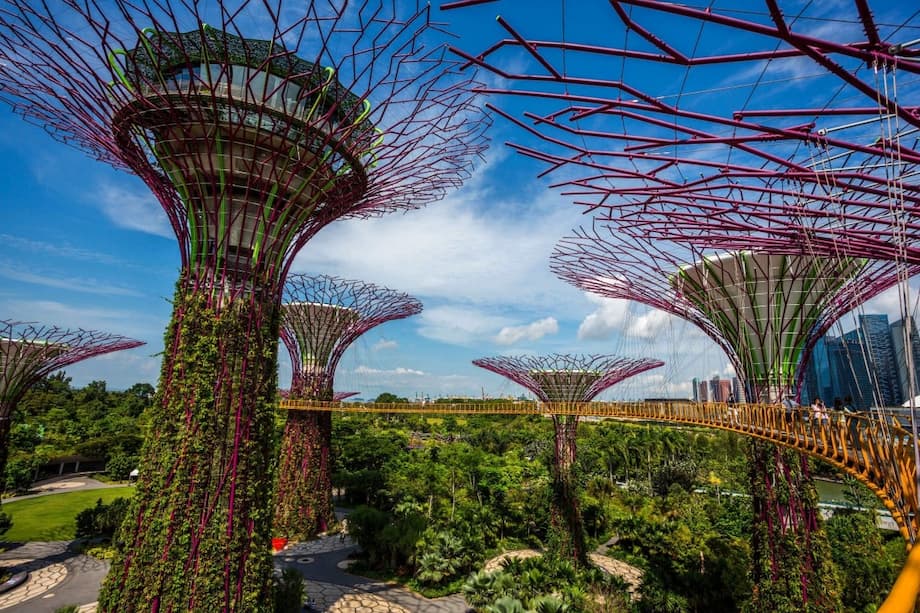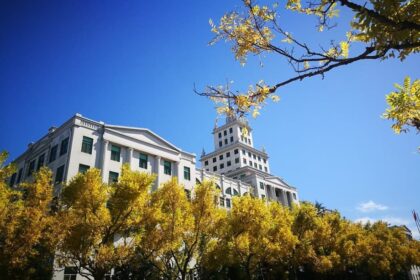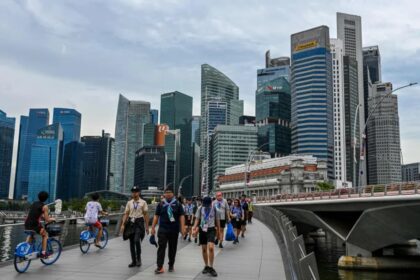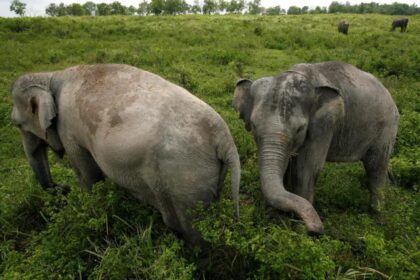Asia’s Coolcation Revolution: Escaping the Heat in a Warming World
As record-breaking heatwaves, wildfires, and stifling humidity sweep across the globe, the world’s tourism industry is undergoing a dramatic transformation. Once-coveted summer hotspots are losing their appeal as travelers increasingly seek refuge in cooler climates—a phenomenon now widely known as the “coolcation.” Nowhere is this shift more evident than in Asia, where cities and regions are rapidly adapting to meet the demands of heat-weary tourists and a changing climate.
- Asia’s Coolcation Revolution: Escaping the Heat in a Warming World
- Why Are Travelers Fleeing the Heat?
- Asia’s Coolcation Hotspots: Where Are Tourists Going?
- How Are Cities and Resorts Adapting to the Coolcation Trend?
- Is the Coolcation Trend Here to Stay?
- Climate Change, Tourism, and the Future of Travel
- What Does This Mean for Travelers?
- In Summary
Coolcations—vacations to destinations with milder temperatures—are not just a fleeting trend. They represent a fundamental rethinking of how, where, and when people travel. This article explores the rise of coolcations in Asia, the innovative strategies cities are deploying to attract visitors, and the broader implications for the global tourism industry.
Why Are Travelers Fleeing the Heat?
In recent years, climate change has made itself felt in unmistakable ways. Europe’s historic landmarks, from the Acropolis in Athens to the Eiffel Tower in Paris, have been forced to close during heatwaves. In Japan, oppressive humidity and soaring temperatures have driven down visitor numbers at major attractions like Tokyo Disney Resort. Even theme parks in the United States, such as Six Flags, have reported significant financial losses due to extreme weather.
According to a European Commission study, northern coastal regions of Europe are projected to see a more than 5% increase in tourism demand during summer and early autumn, while parts of the south could lose nearly 10% of their summer tourists. This pattern is being replicated globally, with travelers actively seeking destinations that offer relief from the heat.
Asia, with its diverse geography and climates, is uniquely positioned to benefit from this shift. From the snow-capped mountains of Japan’s Hokkaido to the green highlands of Vietnam and the innovative urban landscapes of Singapore, the region is rapidly emerging as a coolcation haven.
Asia’s Coolcation Hotspots: Where Are Tourists Going?
While Scandinavia and northern Europe have long been associated with cooler summer escapes, Asia is now home to a growing list of coolcation destinations that are capturing the imagination of both domestic and international travelers. Here are some of the region’s standout coolcation spots:
- Hokkaido, Japan: Japan’s northernmost island offers summer temperatures between 18°C and 25°C, stunning lavender fields, and pristine national parks. The city of Sapporo, famous for its winter ice festival, now uses stored snow to cool public spaces in summer, creating year-round appeal.
- Da Lat, Vietnam: Known as the “City of Eternal Spring,” Da Lat’s mountain climate (16°C to 24°C in summer) and French colonial charm make it a favorite for those escaping the heat and humidity of the lowlands.
- Qinghai and Inner Mongolia, China: These northern regions offer vast grasslands, cool lakes, and unique cultural experiences, with average summer temperatures ranging from 15°C to 27°C. Harbin, in particular, has leveraged its snow-making technology to create indoor ice parks, drawing visitors even in the hottest months.
- Singapore: Despite its tropical location, Singapore is pioneering urban cooling with its iconic Supertrees, green roofs, and energy-efficient cooling technologies. The city’s Gardens by the Bay and extensive green spaces provide shaded oases for tourists.
Other Asian destinations, such as the highlands of Taiwan, the mountainous regions of South Korea, and the Himalayan foothills of India and Nepal, are also seeing increased interest from travelers seeking cooler, nature-rich escapes.
How Are Cities and Resorts Adapting to the Coolcation Trend?
The rise of coolcations is not just about geography—it’s about innovation. Cities and resorts across Asia are investing in new infrastructure and experiences to attract climate-conscious tourists. Here are some of the most notable strategies:
- Year-Round Ski Resorts: In Japan, ski resorts like Hakuba and Karuizawa are reinventing themselves as summer destinations, offering hiking, mountain biking, and water sports during the “green season.” Operators are marketing the concept of hisho (heat escape) and encouraging stays at higher altitudes, where temperatures remain comfortable even in July and August.
- Urban Cooling Solutions: Singapore’s Supertrees and vertical gardens are more than just architectural marvels—they actively cool the city and filter the air. The city’s use of porous pavements, shaded walkways, and advanced air conditioning systems helps maintain a comfortable environment for both residents and visitors.
- Artificial Snow and Ice Parks: Harbin’s Ice and Snow World, the largest winter theme park globally, now operates in summer, using snow-making technology to create a chilled environment. This allows tourists to experience ice sculptures and winter activities even when outdoor temperatures soar.
- Sustainable Tourism Initiatives: Cities like Copenhagen (often cited as a global model) are inspiring Asian destinations with programs that reward eco-friendly travel choices, promote longer stays, and invest in green infrastructure. Abu Dhabi’s Masdar City blends traditional cooling techniques with modern technology, creating cooler microclimates through narrow streets, wind tunnels, and solar panels.
Marketing and Economic Adaptation
Tourism boards and travel agencies are aggressively marketing coolcation packages. In Japan, JR East has partnered with weather services to promote “heat-escape” trips, while the Hoshino Resort group encourages stays at hotels above 800 meters in elevation. In China, travel agencies are offering routes to northern destinations like Harbin and Inner Mongolia, and the government is supporting the development of heat-escaping travel routes.
This adaptation is not just about comfort—it’s about economic survival. A study in China found that domestic tourism revenue drops by 6% for every 1°C increase in temperature, underscoring the vulnerability of traditional hot-weather destinations.
Is the Coolcation Trend Here to Stay?
While the coolcation trend is gaining momentum, experts caution that it may take years—or even decades—for travel patterns to fully shift. Many travelers still prefer warm, sunny destinations, and southern Europe, Southeast Asia, and other traditional hotspots continue to attract millions each year.
However, the data is compelling. According to the Virtuoso Travel Network, nearly half of luxury travel clients are already altering their plans due to climate change. A European Travel Commission survey found that 74% of respondents are adapting their travel to avoid extreme temperatures. In Scandinavia, summer bookings have surged, with Sweden reporting a 263% year-over-year increase in some regions.
Yet, the coolcation boom brings its own challenges. Previously quiet destinations risk overtourism, straining fragile ecosystems and local infrastructure. Norway, for example, has introduced a 3% tourism tax to help manage the influx and fund sustainable development. Successful adaptation will require careful planning, community engagement, and a commitment to sustainability.
Climate Change, Tourism, and the Future of Travel
The coolcation trend is part of a broader reckoning within the tourism industry. Tourism itself is a major contributor to global greenhouse gas emissions, particularly through air travel. Now, the climate crisis is feeding back into the industry, forcing destinations to rethink their offerings and invest in resilience.
Forward-thinking cities are embracing green infrastructure, expanding urban forests, and developing water-based attractions to help tourists beat the heat. Programs like Copenhagen’s Cloudburst Management Plan, which uses parks and public squares as natural cooling hubs, and Paris’s creation of over 800 “cool islands” (parks, pools, and shaded spaces) are being studied and replicated worldwide.
In Asia, the focus is on blending tradition with innovation. Abu Dhabi’s Masdar City combines ancient wind towers with solar-powered cooling, while Singapore’s urban greening efforts are setting new standards for tropical cities. These strategies not only make cities more livable but also more attractive to climate-conscious travelers.
Investment and Opportunity
The shift toward coolcations is creating new investment opportunities in underdeveloped regions and sustainable infrastructure. Investors are focusing on destinations with green-certified hotels, hybrid hospitality models, and community-driven conservation efforts. The climate crisis is reshaping tourism, and regions that adapt with sustainable approaches are becoming attractive both to travelers and investors.
What Does This Mean for Travelers?
For travelers, the rise of coolcations means more choices—and more responsibility. As the world warms, escaping the heat is no longer just a matter of comfort; it’s a matter of health and safety. Heatwaves can be deadly, especially for vulnerable populations, and wildfires, droughts, and water shortages are becoming more common in traditional vacation spots.
Travelers are encouraged to consider not just the temperature, but also the sustainability of their destinations. Choosing eco-friendly accommodations, supporting local communities, and traveling during shoulder seasons can help reduce the environmental impact of tourism and support the resilience of coolcation destinations.
In Summary
- Climate change is driving a global shift in tourism, with travelers increasingly seeking “coolcations” in milder climates.
- Asia is emerging as a leader in coolcation destinations, with cities and regions like Hokkaido, Da Lat, Harbin, and Singapore adapting to attract heat-weary tourists.
- Innovative urban cooling solutions, year-round resort offerings, and sustainable tourism initiatives are key strategies for adaptation.
- The coolcation trend presents both opportunities and challenges, including the risk of overtourism and the need for sustainable infrastructure.
- Travelers and industry stakeholders alike must prioritize sustainability and climate resilience to ensure the long-term viability of coolcation destinations.












